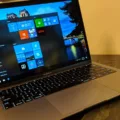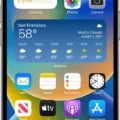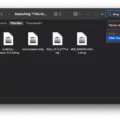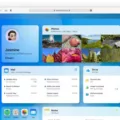If you’re a Mac user, chances are you have accumulated quite a few messages over time. Whether they are emails or conversations on messaging apps, the number of messages can quickly get out of hand. Fortunately, Macs make it easy to delete all messages at once with just a few simple steps.
First, open the message app on your Mac. This is usually located in the dock at the bottom of your screen. If you don’t see it, look for it in your Applications folder. Once you’ve opened the message app, select the conversation or inbox that contains all of the messages you want to delete.
Next, press and hold down the Command key and then click on each message that you want to delete. As you click on each one, it will be highlighted and added to your selection. When you’ve selected all of the messages that need to be deleted, simply hit the delete key on your keyboard or right-click and select “Delete” from the menu options.
Now that all of your messages have been deleted from one conversation or inbox, repeat the same steps for any other conversations or inboxes that need to be cleaned up. When finished, check back in a few days to make sure nohing was missed and no new messages were added to an old conversation that was cleared out earlier.
By following these steps, deleting all messages from your Mac should be a hassle-free experience! Don’t forget to save any important emails bfore deleting them so they remain accessible if needed later on down the line.

Deleting All Messages on Mac at Once
Yes, you can delete all messages on a Mac at once. To do this, open the Messages app and press Option + Command + K, or you can right-click an empty space in the conversation window and select the Clear Chat Transcript option. This will clear your entire chat history for that conversation. If you have multiple conversations that you want to delete, repeat this process for each conversation window. This will delete all of the messages in these conversations at once.
Bulk Deleting Messages on Mac
To bulk delete messages on your Mac, open the Messages app and select the Storage tab. Then click on Manage and select Messages in the sidebar. You’ll see a list of all attachments associated with your messages in the main window. To remove them all at once, click on the fist attachment, press and hold Shift, then click on the last attachment. This will select all attachments at once and you can then hit Delete to remove them all.
Deleting Messages on Mac but Not iPhone
To delete all messages on Mac but not iPhone, first open the Messages app on your Mac. Then go to Preferences from the menu bar and select General. Uncheck the box next to “Save history when conversations are closed”. This will ensure that no messages are saved on your Mac and all messages will be automatically deleted once you close a conversation. However, any messages you have sent or received on your iPhone will remain unchanged.
Selecting Multiple Messages on iMessage on Mac
To select multiple Messages on iMessage on Mac, start by clicking on a message. You can then use the usual key modifiers to select multiple messages:
• Cmd-click to manually select multiple messages,
• Select a message, and then Shift-click on another down below or up to select a contiguous number of messages.
You can also drag your mouse over multiple messages in order to select them all at once.
Effect of Deleting Messages on Mac on IPhone Messages
Yes, when iCloud syncing is enabled on both your Mac and iPhone, deleting a message or conversation on one device will remove it on the other. If you want to keep separate sets of data on different Apple products, you shold switch off iCloud for iMessage. The process of switching off iCloud sync is simple: on your Mac, open the Messages app and go to Preferences > Accounts > iMessage. Then uncheck the box next to “Enable this account” and click Done. On your iPhone, open the Settings app, tap Messages > Send & Receive > and then disable “iMessage”.
Removing iMessage from a Mac
To remove iMessage from your Mac, you’ll first need to open the Messages app and then click on the ‘Preferences’ option. From there, select the ‘iMessage’ tab and click the ‘Sign Out’ button. You’ll then be prompted to confirm that you’d like to sign out. Once you’ve selected ‘Sign Out’ again, your iMessage account will be completely removed from your Mac and you won’t receive any more messages until you sign in again.
Where Are iMessages Stored on a Mac?
IMessages are stored in a folder called “Messages” which is located in the Library of your Mac. To access this folder, you can open Finder and select Go > Go to Folder. Then, type in ~/Library/Messages and press enter. This will open the Messages folder were all your iMessages are stored. If you have enabled the option to save iMessage history, then all conversations will be stored here, including both incoming and outgoing messages.
Do Messages Use Storage Space on Mac?
Yes, messages on your Mac do take up storage space. When you send or receive attachments through iMessage or SMS on the Messages app, these can quickly accumulate and can be difficult to manage over time. Furthermore, even if you delete the message, a copy of the attachment may stil remain in the Messages app and will take up space until it is manually removed. To free up space, make sure you delete attachments when you no longer need them and clean out old conversations that have too many attachments.
Deleting Messages from iCloud
To delete all of your messages from iCloud, start by signing in to iCloud.com with your Apple ID. Once you have signed in, select the Mail option and choose your Trash folder. You will be presented with a list of all the emails that are currently in the Trash folder. At the top right corner of the page, you will find a gear icon. Select this icon and then select “Delete All” from the options presented. This will delete all of the emails from iCloud at once.
Selecting All on a Mac
To select all items in a window on a Mac, first click the window to make it active. Then press Command-A to select all of the items in the window. If you want to deselect one item when multiple items are selected, Command-click the item.
Deleting Multiple iMessages on iPhone
To delete multiple iMessages on iPhone, begin by launching the Messages app from the Home screen. Tap Edit, then select the conversations you wish to delete. Once you’ve selected the conversations, tap Delete to remove them from your device. You can also swipe left over an individual conversation and choose Delete to remove that conversation only.
Why Don’t Deleted Messages Sync Between My Phone and Mac?
When you use Messages in iCloud, all of your Messages and texts are synced across all devices that use the same Apple ID. So if you delete a message on your phone, it will be deleted on your Mac as well. Keep in mind that this only applies to messages sent and received while using Messages in iCloud – any messages sent or received before enabling Messages in iCloud will not be synced.
Where Do Deleted iMessages Go on a Mac?
When you delete an iMessage on your Mac, the message is not permanently erased from your device. Instead, the message is moved to a hidden folder called “chat.db”. This folder stores all of the deleted messages for a period of time, so that you can restore them if needed. To find and restore deleted iMessages, go to Finder > Go > Go to Folder, then type in “~/Library/Messages/chat.db” and press enter. You sould find a list of all the previous versions of the chat database file stored in this folder. Select the file you want to restore and click “Restore”. That will restore your old conversations in the Messages app, and you should find all your deleted iMessages in there.
Do IMessages Get Stored in ICloud?
Yes, iMessages are stored in iCloud. When you sign in to your Apple devices with the same Apple ID and turn on Messages in iCloud, all of your messages, photos, and attachments will be stored in iCloud. This allows you to access your messages acoss all of your devices quickly and easily. Your messages are also end-to-end encrypted, so no one else can access them or view their content – not even Apple.
Does Deleting Messages on iPhone Also Delete from iCloud?
Yes, deleting messages on iPhone will delete the messages from iCloud. If Messages in iCloud is turned on, anything you delete from your iPhone will be deleted from all other Apple devices that are connected to your iCloud account. Once a message or conversation is deleted, it cannot be recovered.
How Long Does Data Remain in iCloud?
Messages stored in iCloud are retained for up to 30 days. This includes both iMessage and SMS text messages, if the “SMS Forwarding” option is enabled on your iOS device. After 30 days, messages are deleted from iCloud automatically, unless they have been downloaded to a device. It is important to note that cellular providers may have their own policies regardig the retention of SMS text messages, so it is best to contact them directly for more information.
Does Deleting a Backup Delete All Data?
No, deleting your iCloud backup will not delete everything. iCloud backups store your photos, messages, and oter app data, but do not contain music files, movies, or the apps themselves. Therefore, deleting an iCloud backup will permanently remove your photos, messages, and other app data from your device but will not delete music files, movies, or apps.








